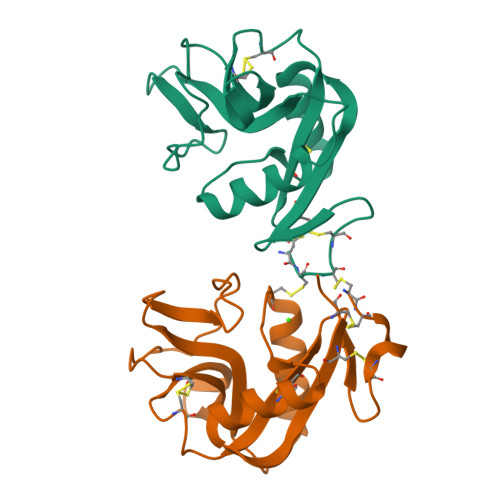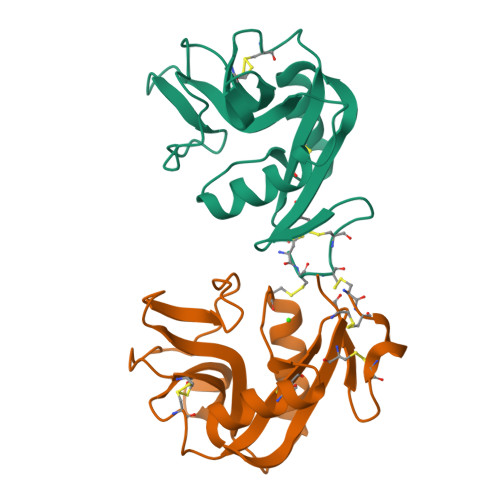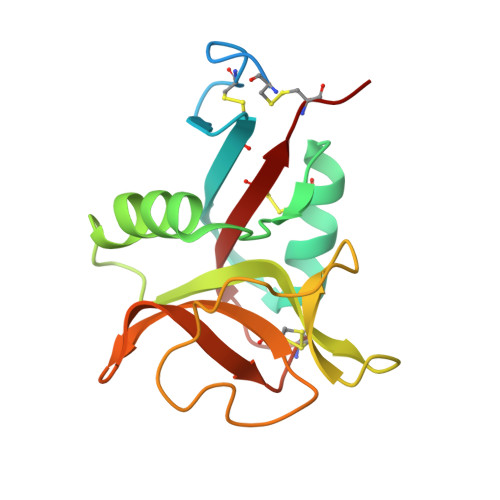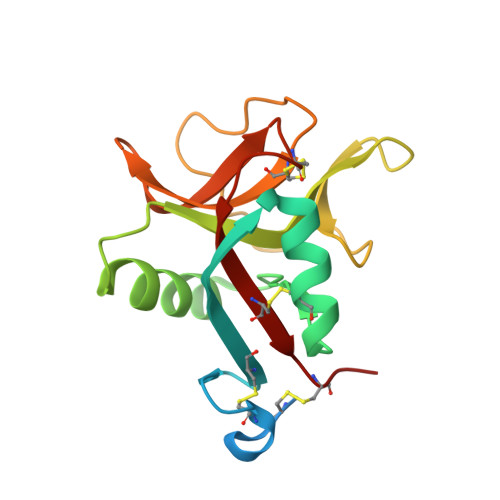Novel Ca2+-independent carbohydrate recognition of the C-type lectins, SPL-1 and SPL-2, from the bivalve Saxidomus purpuratus.
Unno, H., Itakura, S., Higuchi, S., Goda, S., Yamaguchi, K., Hatakeyama, T.(2019) Protein Sci 28: 766-778
- PubMed: 30793424
- DOI: https://doi.org/10.1002/pro.3592
- Primary Citation of Related Structures:
6A7S, 6A7T - PubMed Abstract:
Novel Ca 2+ -independent C-type lectins, SPL-1 and SPL-2, were purified from the bivalve Saxidomus purpuratus. They are composed of dimers with either identical (SPL-2 composed of two B-chains) or distinct (SPL-1 composed of A- and B-chains) polypeptide chains, and show affinity for N-acetylglucosamine (GlcNAc)- and N-acetylgalactosamine (GalNAc)-containing carbohydrates, but not for glucose or galactose. A database search for sequence similarity suggested that they belong to the C-type lectin family. X-ray crystallographic analysis revealed definite structural similarities between their subunits and the carbohydrate-recognition domain (CRD) of the C-type lectin family. Nevertheless, these lectins (especially SPL-2) showed Ca 2+ -independent binding affinity for GlcNAc and GalNAc. The crystal structure of SPL-2/GalNAc complex revealed that bound GalNAc was mainly recognized via its acetamido group through stacking interactions with Tyr and His residues and hydrogen bonds with Asp and Asn residues, while widely known carbohydrate-recognition motifs among the C-type CRD (the QPD [Gln-Pro-Asp] and EPN [Glu-Pro-Asn] sequences) are not involved in the binding of the carbohydrate. Carbohydrate-binding specificities of individual A- and B-chains were examined by glycan array analysis using recombinant lectins produced from Escherichia coli cells, where both subunits preferably bound oligosaccharides having terminal GlcNAc or GalNAc with α-glycosidic linkages with slightly different specificities.
Organizational Affiliation:
Biomolecular Chemistry Laboratory, Graduate School of Engineering, Nagasaki University, Nagasaki 852-8521, Japan.




















